Fish can be fickle creatures when it comes to company, so it’s not always easy to diversify your aquarium as you see fit.

When creating a community tank, the harmonious coexistence of its members is crucially important, and in these terms, you can never go wrong with dwarf cichlids.
These small fish typically get along with other species and have some interesting personality quirks that only add to their charm.
This list should help you choose the best ones for your needs.
Top 15 Dwarf Cichlids For a Great Community Tank
Cichlids are a group of fish that are well-known for their aggressive behavior.
Unfortunately, their notoriety deters some aquarists from ever experiencing their otherwise interesting personalities.
In their eyes, these troublemakers are just not worth the unnecessary chaos.
Cichlids’ smaller counterparts, however, share all of their fun and playful characteristics, without any of the belligerences.
Moreover, most dwarf cichlids will thrive in a community tank setting as long as they’re housed with other peaceful species.
Before we plunge in, I should clarify that there are two main types of dwarf cichlids:
- the West African Dwarf Cichlids
- the South American Dwarf Cichlids
Accordingly, each of these species has different environmental requirements and needs.
Fish from the West African variant typically fare better in a community, whereas those of the South American prefer being alone in the tank with some exceptions.
With over 90 different species, choosing the best ones wasn’t an easy task.
I managed to narrow down my list to just 13 entries which I believe would be an ideal fit for your community aquarium.
So, let’s take a look at the top 13 dwarf cichlids for a great community tank:
1. Brevis Shelldweller – Lamprologus Brevis
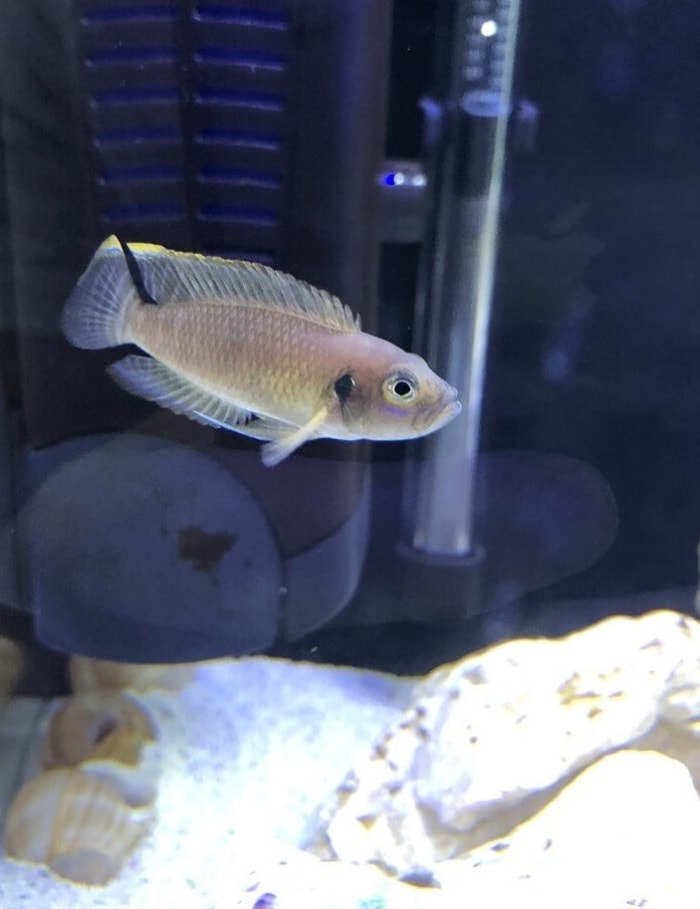
| Maximum Adult Size: | 2.1 inches (around 5.3 cm) |
| Minimum Tank Size: | 10-15 gallons |
| Temperature Range: | 77 to 79 °F (25 to 26 °C) |
| Suitable for Beginners: | Yes |
The Brevis Shelldweller, also known as Brevis Shellie Cichlid, belongs to the Neolamprologus genus. These cute little fish are ideal for anyone who wants to create a community tank, regardless of experience.
They’re easy to keep and act peacefully as long as they’re provided with plenty of snail shells and their water requirements are met.
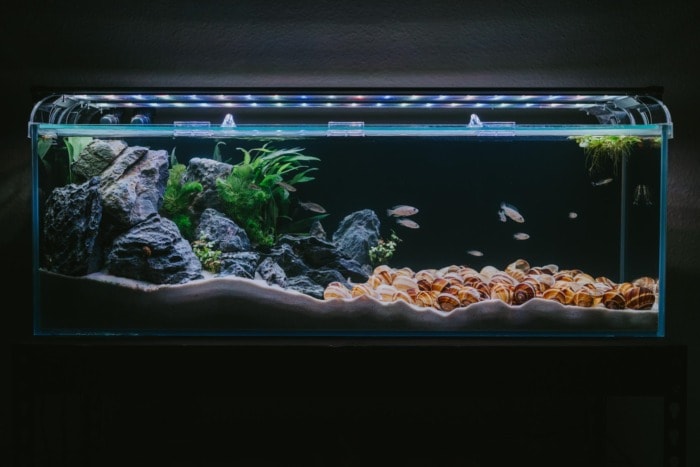
A good rule of thumb for this type of setup is to have more snail shells than shell dwellers so they don’t compete for space.
Though competitive for space these cichlids are actually tiny:
With an adult size of just 2.1 inches, the Brevis Shelldweller is one of the smallest dwarf cichlid species. Their minuscule size makes them an ideal addition for smaller tanks.
Because shellies like to occasionally bury their shells, you should also provide them with a deep sandy substrate. Another important factor you should consider if you plan on keeping several shell dwellers is the male-to-female ratio.
To keep your shellies on the best of their behavior, the number of females should outnumber the number of males.
Otherwise, the males will become more aggressive and begin to compete with each other.
2. Redbreasted Acara – Laetacara dorsigera
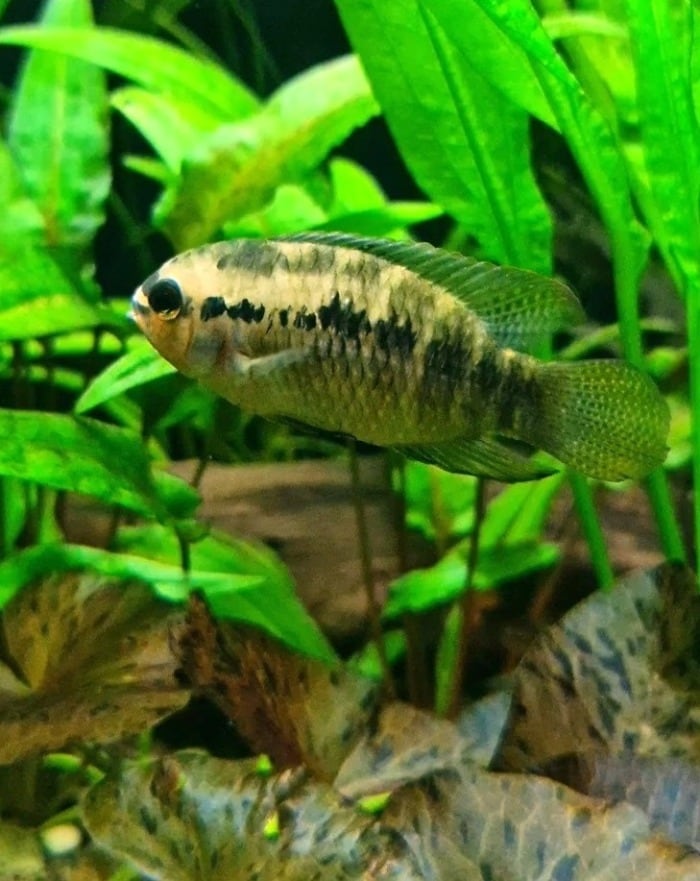
| Maximum Adult Size: | 2.5 – 3 inches (6.4-7.6 cm) |
| Minimum Tank Size: | 30 gallons for a pair |
| Temperature Range: | 68-79 °F (25 to 26 °C) |
| Suitable for Beginners: | Yes |
I have kept several community tanks with dwarf cichlids over the years, but my personal favorite species is the Redbreasted Acara from the Laetacara genus.
Acaras have fun personalities and are quite peaceful in nature.
Whenever I’ve used them in any of my community tanks, they barely caused any trouble to the other tank mates and liked to fool around when they found an opportunity.
However, their tank mates should be peaceful and of medium size, so they don’t get eaten or pose any threat to them.
Some good companions for the Redbreasted Acara include the cory catfish, hatchetfish, tetras, and suckermouth catfish.
Author’s note: The natural charm of Redbreasted Acaras is even reflected in their genus name, Laetacara, which translates to ‘smiling cichlid’.
Because Redbreasted Acaras are found in areas with dense vegetation in the Rio Parana and Rio Guapore rivers in South America, their ideal environment should include a lot of shady hiding spots among driftwood, caves and plants. To achieve this, you could also use floating tank plants to diffuse the light and a dark sand substrate.
3. German Blue Ram – Mikrogeophagus ramirezi
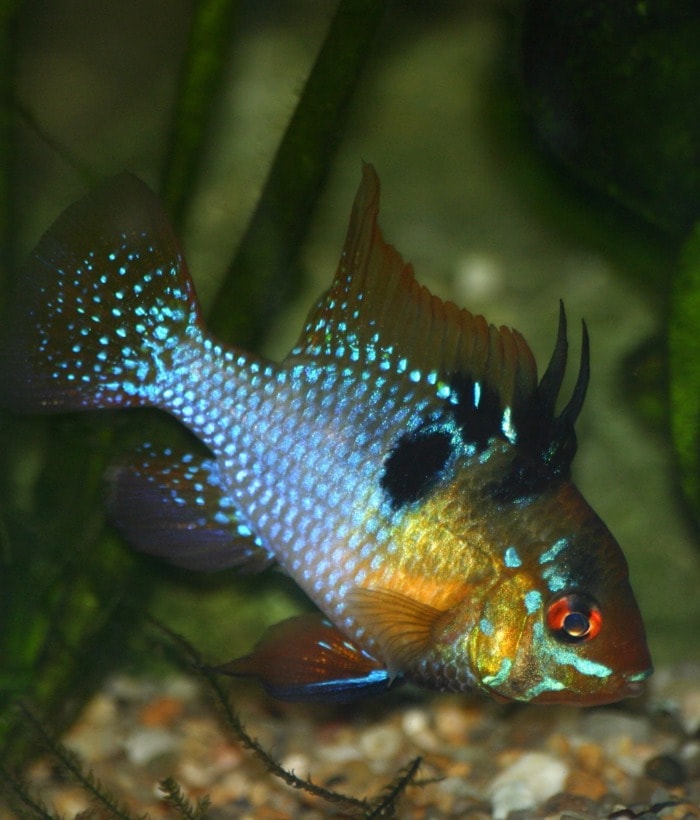
| Maximum Adult Size: | 3 inches (7.6 cm) |
| Minimum Tank Size: | 20 gallons |
| Temperature Range: | 84-86 °F (29 to 30 °C) |
| Suitable for Beginners: | Some experience is needed |
If you want to add some cichlid spice to your medium-sized community of tropical fish, then the German Blue Ram would be a great bet. Their magnificent body hues make them an ideal candidate for a centerpiece in smaller aquariums.
Coming from the Mikrogeophagus genus, the German Blue Rams boast a fun personality to go with their flashy display of colors. I have a couple in my current setup, and one of my males routinely investigates any change in the environment.
As it turned out, however, his curiosity was fueled by nothing more than his insatiable hunger.
Another thing I love about German Blue Rams is that they can be kept even in a smaller 20-gallon tank.
These fish are a bit delicate when it comes to water conditions, so I wouldn’t recommend them to beginners.
4. Agassiz’s dwarf cichlid – Apistogramma Agassizii
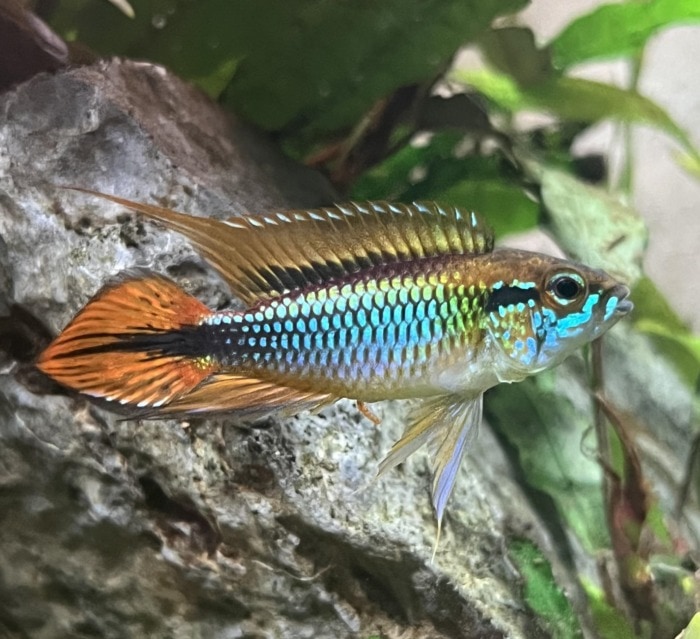
| Maximum Adult Size: | 3.5 inches (8.9 cm) |
| Minimum Tank Size: | 15 gallons |
| Temperature Range: | 74-84 °F (23-29 °C) |
| Suitable for Beginners: | Yes |
Agassiz’s dwarf, or as it’s most commonly referred to as apisto, is one of the species among the Apistogramma genus. This fish is a South American cichlid that’s a great choice for inexperienced fishkeepers. Apistos require minimal care and are a great fit for a variety of community setups due to their amicable personalities.
They do best with other fish which are close to their size and have a similar demeanor.
My preferred choices are ram cichlids and dwarf gouramis.
Apistos thrive in planted aquariums with lots of rocks and other hiding places.
It’s a good idea to have at least one hiding spot per female.
However, if you’re going to house them in a smaller aquarium, I suggest having no more than one male apisto.
They come in a variety of color morphs depending on their region of origin, such as red, gold, and blue.
This gives you a lot of leeway in deciding the color arrangement of your community aquarium.
5. Umbrella Cichlid – Apistogramma Borellii
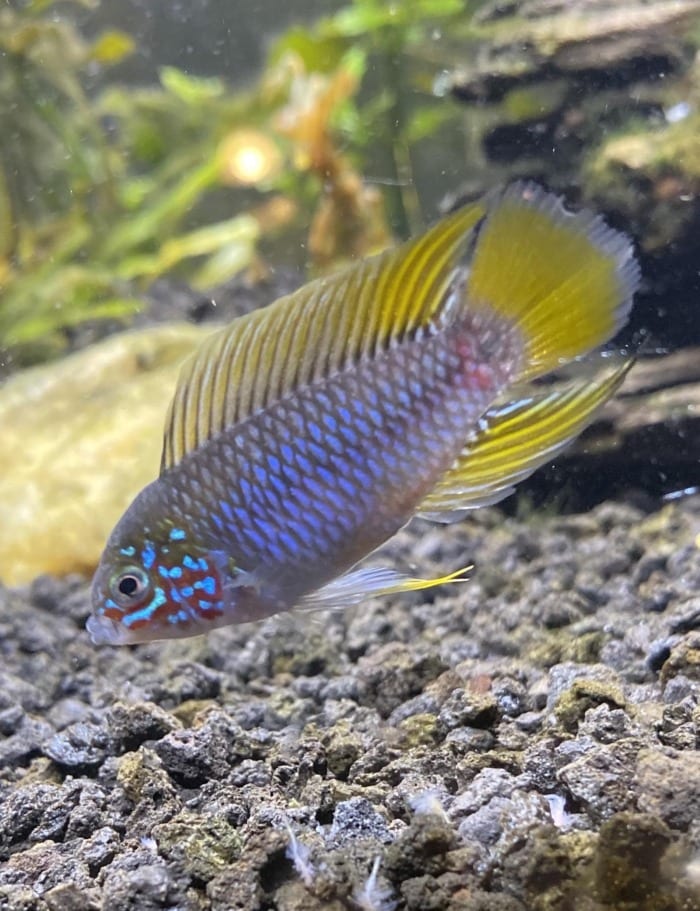
| Maximum Adult Size: | 2.6 inches (6.5 cm) |
| Minimum Tank Size: | 20 gallons |
| Temperature Range: | 74-84 °F (23-29 °C) |
| Suitable for Beginners: | Yes |
Umbrella cichlids, members of the Apistogramma genus, are a great choice for anyone who’s just dipping their toes in community tank setups.
These cichlids are less aggressive than other Apistogramma species and only become territorial when breeding.
However, males still show aggression towards each other, but this can be minimized with proper tank arrangement.
One way you could achieve this is by keeping them single or in harems.
Author’s note: A “harem” in the context of aquarium keeping is a group of fish where the female fish outnumber the males.
Anyway, another standout feature of this species is its hardiness. In the wild, these guys can withstand temperature drops down to 40 °F. Even though the ones sold at your local aquarium store won’t be nearly as resilient, you can rest assured they will survive a power outage on a chilly night.
These tiny fish have minimal requirements in terms of tank size and can be housed in a 20 gallons aquarium.
Umbrella cichlids come in several color patterns, such as blue-gold and gold, but the most popular one is the opal.
6. Bolivian Ram – Mikrogeophagus altispinosus
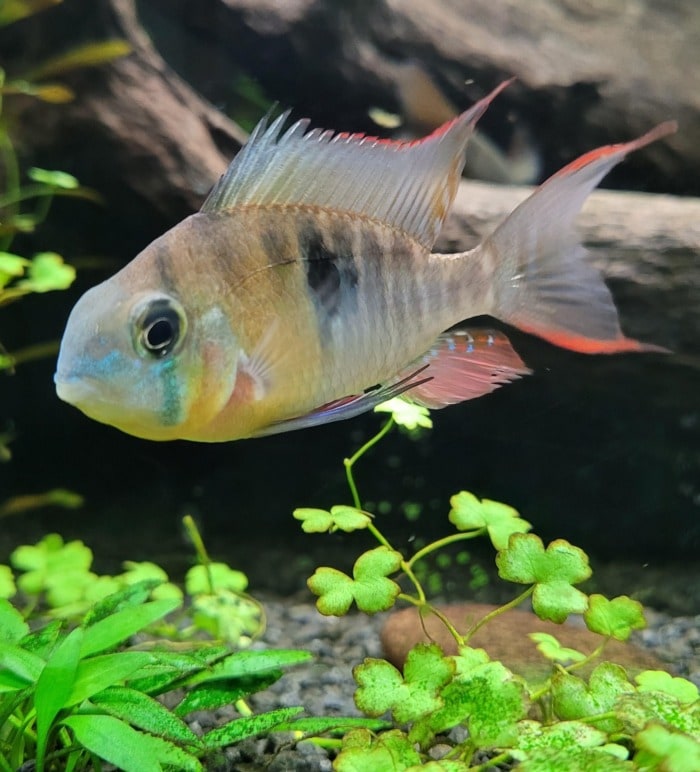
| Maximum Adult Size: | 3 inches (7.6 cm) |
| Minimum Tank Size: | At least 30 gallons |
| Temperature Range: | 75 to 83 °F (24 to 28 °C) |
| Suitable for Beginners: | Yes |
Touted by many as the most beautiful freshwater fish in the aquarium hobby, the Bolivian Ram which belongs to the Mikrogeophagus genus is also one of the most peaceful ones.
These features make it a great choice for a centerpiece species in a non-aggressive community setup.
It’s a good idea to group them, as Bolivian Rams feel at home when they’re with at least 6 or 8 of their own.
This, however, would require a tank size of at least 40-55 gallons.
In any case, it’s perfectly fine to keep a Bolivian Ram alone regardless of its gregarious nature.
As with some other dwarf cichlids, Bolivian Rams love aquariums with dense vegetation and a lot of hiding spots.
7. Golden Dwarf – Nannacara anomala
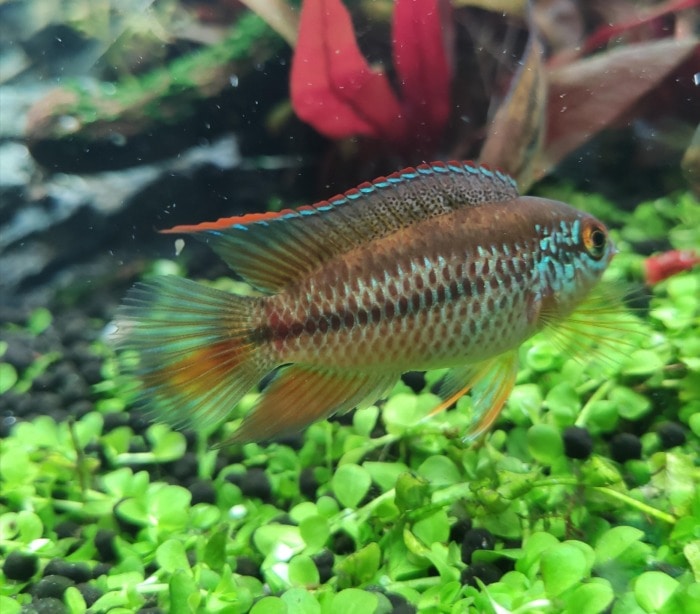
| Maximum Adult Size: | 3 inches (7.6 cm) |
| Minimum Tank Size: | 20 gallons or more |
| Temperature Range: | 72-77 °F (25 °C) |
| Suitable for Beginners: | Yes |
Also known as Goldeneye Dwarf Cichlids, Golden dwarves are part of the Nannacara genus and are generally regarded as excellent beginner fish due to their hardiness and price. They are also quite gentle and easily get along with other peaceful community fish, most of the time.
These small cichlid species are a popular choice in the community due to the relative ease of their breeding. A male and female can reproduce even if the water conditions are substandard.
It should be noted that females become more aggressive during breeding and could attack other fish.
Moreover, females might even kill the males if the tank isn’t large enough.
When it comes to colors, Golden Dwarves come in different hues ranging from emerald green to turquoise.
During the spawning period, however, females change their color to a yellow checkerboard pattern.
8. Temporalis Shell – Telmatochromis temporalis
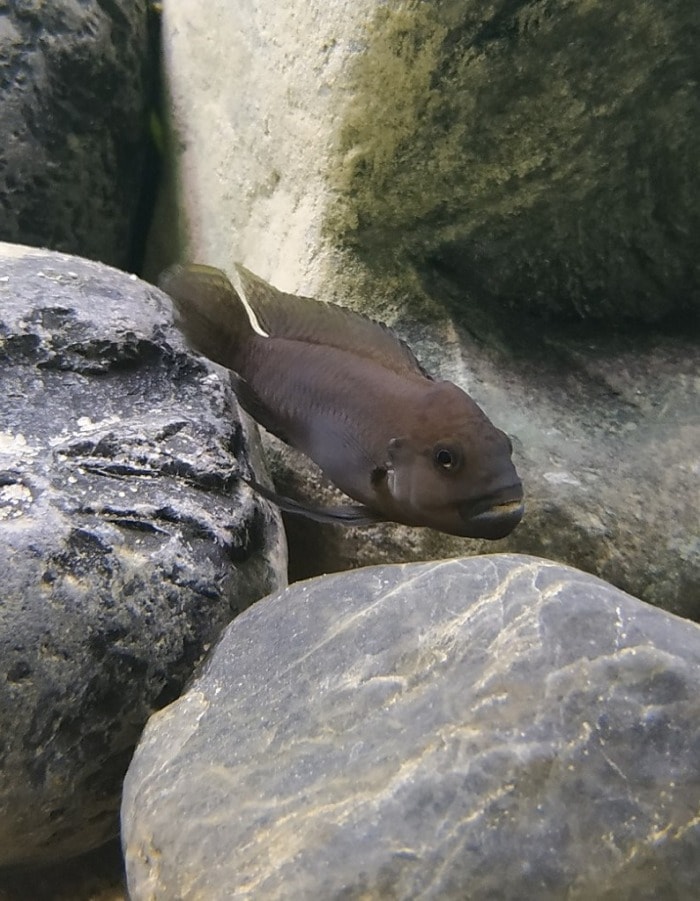
| Maximum Adult Size: | 4 inches (10 cm) |
| Minimum Tank Size: | 50 gallons |
| Temperature Range: | 77-79°F (25 -26.1°C) |
| Suitable for Beginners: | No |
Classified within the Telmatochromis genus, the temporalis shell might not be as popular as the other breeds on this list, but it certainly makes up for it with its unusual shape.
Their peculiarly elongated bodies can certainly add an interesting twist to any dwarf community setup.
In bigger aquariums, the temporalis fares well with other rock dwellers like the Neolamprologus, Altolamprologus and Julidochromis.
The Telmatochromis temporalis is native to lake Tanganyika in West Africa, which is also the home of the Lemon Cichlid.
Both of these fish can be a great addition to a Tanganyika community aquarium.
9. Keyhole Cichlid – Cleithracara maronii
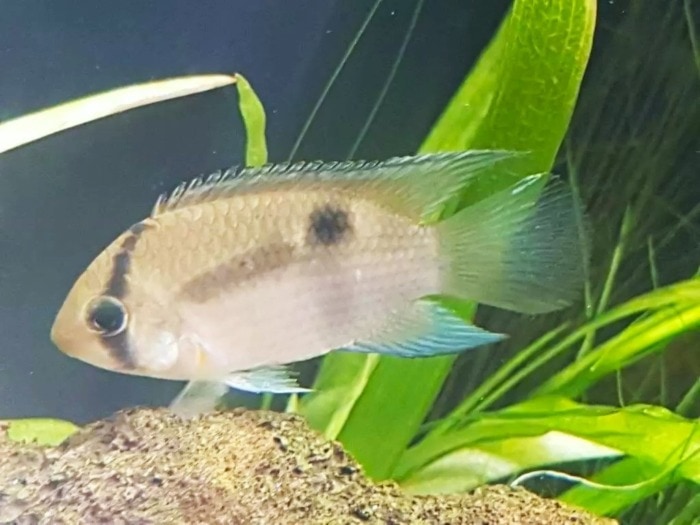
| Maximum Adult Size: | 4 inches (10 cm) |
| Minimum Tank Size: | 20 gallons, 55 gallons for a pair |
| Temperature Range: | 77-79°F (25 -26.1°C) |
| Suitable for Beginners: | Yes |
The Keyhole Cichlid, assigned to the genus known as Cleithracara, is arguably the most peaceful dwarf species out there, but unfortunately, it is commonly overlooked because of its somewhat peculiar appearance.
This is quite unfortunate, for the Keyhole Cichlid is one of the most interesting dwarf species when it comes to its mating behavior.
Unlike most dwarf cichlids which are polyamorous, keyholes remain loyal even after the spawn of their babies. This is a phenomenon that is rarely observed in other fish, and animals as a whole for that matter.
The only time when these fish might become aggressive is if any of the other tank mates pose a threat to the fry.
Due to their shy nature, it’s a good idea to provide your Keyholes with sufficient cover in the form of caves and plants.
10. Dwarf Mbuna – Pseudotropheus Saulosi
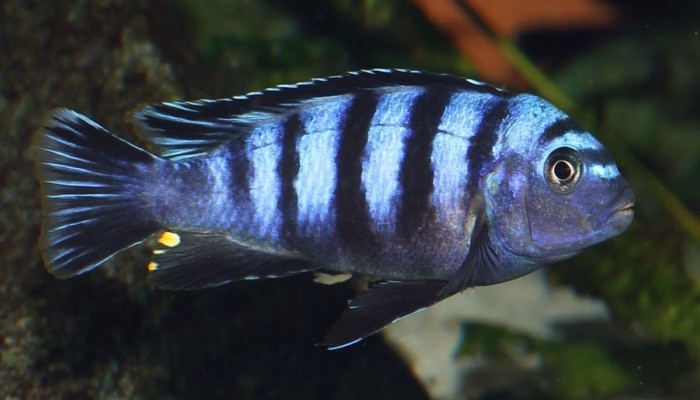
| Maximum Adult Size: | 3.5 inches (8 cm) |
| Minimum Tank Size: | 30-55 gallons |
| Temperature Range: | 75-79 °F (24-26 °C) |
| Suitable for Beginners: | Yes |
Coming from the Pseudotropheus genus, the Dwarf Mbunas are another suitable choice for inexperienced fishkeepers.
They’re offered at a cheap price and are relatively easy to keep.
However, even though they’re considered dwarf cichlids, they require at least 55 gallons of water so they can have enough space to swim around and be able to form a school. Because Mbunas aren’t as peaceful as the other entries in this list, it is recommended to keep them in schools of at least five to reduce aggression from males.
Author’s note: The dominant Mbuna Males have a blue coat with black stripes, whereas females and smaller males are yellow.
11. Cockatoo – Apistogramma cacatuoides
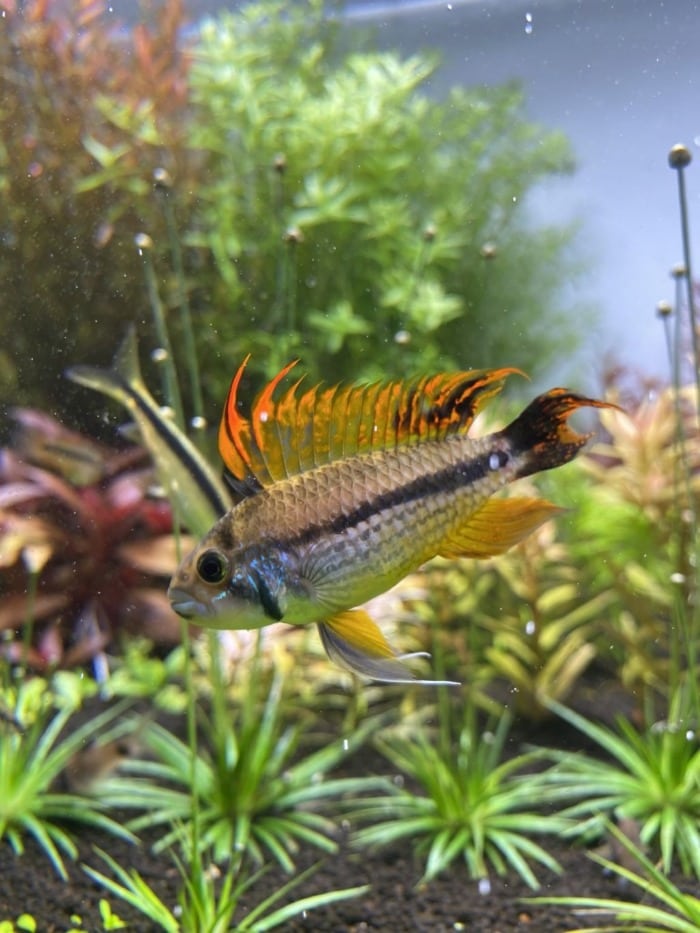
| Maximum Adult Size: | 2-3.5 inches (5 to 9 cm) |
| Minimum Tank Size: | 30 gallons |
| Temperature Range: | 79-84 °F (26 to 29 °C) |
| Suitable for Beginners: | No |
Cockatoo cichlids from the well-known Apistogramma genus are a popular choice among experienced fishkeepers because of their adaptability and diverse colors.
As with most other dwarf cichlids, they are also fairly peaceful, unless they’re breeding.
During this time, they become highly territorial and aggressive toward other male cockatoos.
If you intend on keeping multiple cockatoos in the same tank, make sure there’s enough room for each male.
They will rarely exhibit aggression towards each other if they’re provided with sufficient living space.
Another way to reduce their aggressive tendencies is to create a lot of caves and other hiding spots.
This will decrease the likelihood of clashes between males and subsequently lower their levels of stress.
Apart from that, cockatoo cichlids rarely have any trouble with other species, which makes them a great choice for a community aquarium.
12. Kribensis – Pelvicachromis pulcher
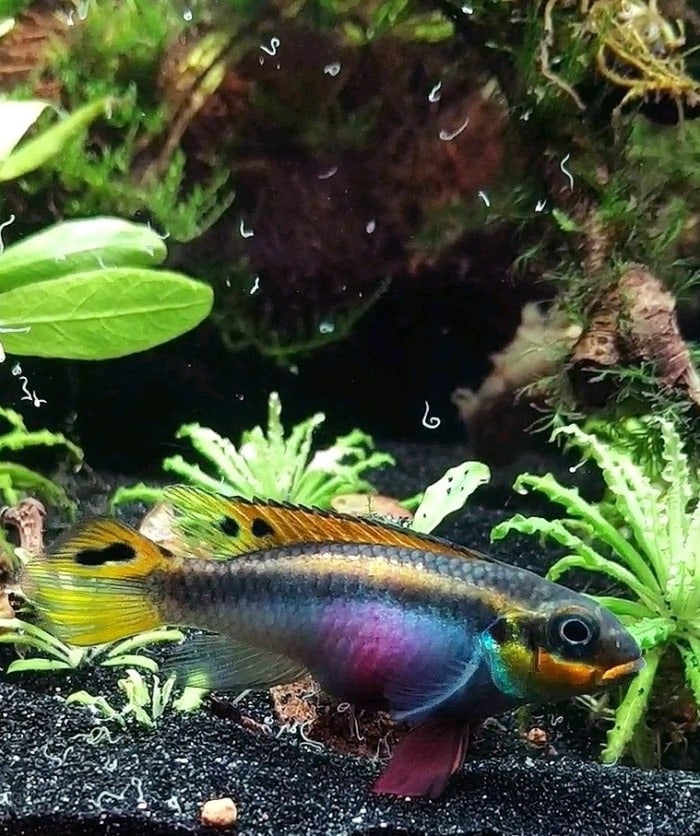
| Maximum Adult Size: | 3 inches (7.6 cm) |
| Minimum Tank Size: | 10 gallons for a pair |
| Temperature Range: | 79-84 °F (26 to 29 °C) |
| Suitable for Beginners: | Yes, in a single-species tank |
The glamorous look of the Kribensis makes it a top choice for many aquarists who strive to diversify the color palette of their community tanks.
The Kribensis, a cichlid within the Pelvicachromis genus, comes in several color morphs such as yellow, green, blue, and red.
What’s more interesting, however, is that the belly of the females turns cherry-red during spawning.
You can keep a mating pair of Kribensis cichlids in a 10-gallon aquarium, but no other fish.
Suggested Read: Fish Stocking Ideas for a 10-Gallon Freshwater Tank
Kribensis are generally regarded as non-aggressive, but they may occasionally attack other fish.
Their prime targets in such cases are slow-moving fish, so it would be best to avoid such species if you intend on having a Kribensis in your community. To further decrease the risk of aggression, avoid keeping them with other bottom-dwelling fish such as dwarf plecos.
13. Redfin Three-Striped Cichlid – Apistogramma trifasciata
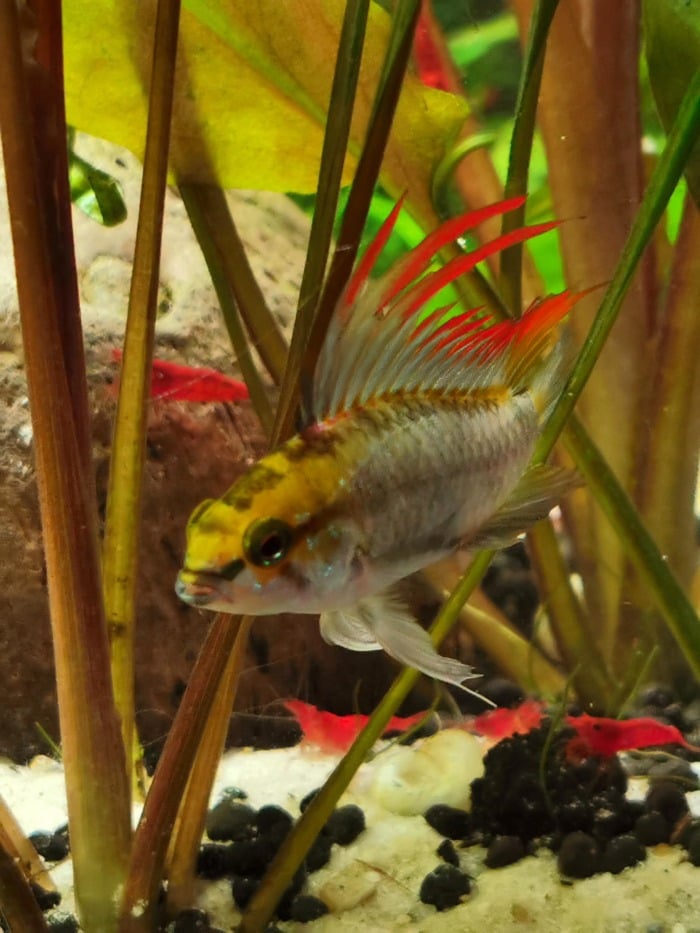
| Maximum Adult Size: | 2.2 inches (5.5 cm) |
| Minimum Tank Size: | 20 gallons for a pair |
| Temperature Range: | 72 – 84°F (22 – 29°C) |
| Suitable for Beginners: | No |
The Redfin Three-Striped Cichlid (Apistogramma trifasciata) is one of the rarer species of dwarf cichlids in the hobby.
Nevertheless, these tiny colorful fish are still well appreciated among hobbyists. Their calm demeanor makes them a good choice for community setups as long as they’re provided with space.
Redfin Three-Striped Cichlids tend to get along with most docile fish, especially those occupying the top column.
However, they should be kept at a 1:2 male to female ratio, as otherwise they will exhibit aggression to other males of their kind.
Since the Redfin Three-Striped Cichlids spend most of their time at the bottom, they require plenty of hiding spaces.
As such, using a variety of live plants, rocks and driftwood is a necessity for their longevity.
Author’s note: The Redfin Three-Striped Cichlid can live up to 10 years with proper care.
14. Panda Dwarf Cichlid – Apistogramma nijsseni
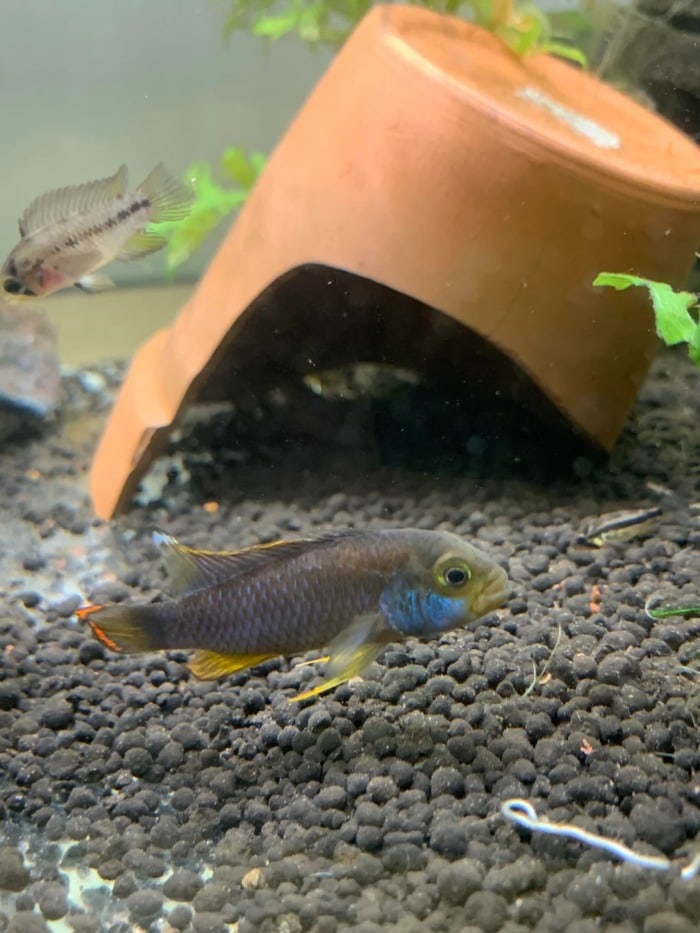
| Maximum Adult Size: | 3 inches (7.62 cm) |
| Minimum Tank Size: | 20 gallons |
| Temperature Range: | 73 – 86°F (22.8 – 30°C) |
| Suitable for Beginners: | No |
The Panda Dwarf Cichlid from the Apistogramma genus boasts a colorful yellow body interspersed with yellow stripes.
Unlike most other dwarf cichlids, they have a rather thick body, which is more prominent in males.
As they mature, Panda Dwarf Cichlids reach a maximum body size of 3 inches, but they still require at least 20 gallons of free space in their tank.
They can generally be kept with most peaceful community species, especially Hatchetfish, Neon Tetras and Zebra Danios.
Since Panda Dwarf Cichlids come from shady, slow moving waters, these fish will fare best with a dark substrate and plenty of vegetation.
To better match their natural habitat, you can use floating plants to diffuse incoming lighting.
Since they’re extremely sensitive to water parameter fluctuations, Panda Dwarf Cichlids aren’t suitable for beginners.
However, if you’re a more experienced fishkeeper and manage to look after them properly, you can expect a lifespan of 2 – 5 years.
15. Lemon Cichlid – Neolamprologus leleupi
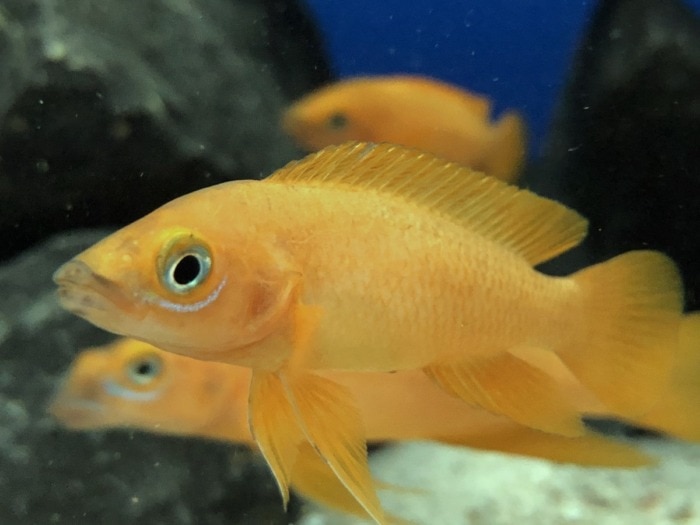
| Maximum Adult Size: | 3.9 inches (10 cm) |
| Minimum Tank Size: | 20 gallons for single pair, 40 gallons for a community tank |
| Temperature Range: | 73-81 °F (23-27 °C) |
| Suitable for Beginners: | No |
The Lemon Cichlid from the Neolamprologus genus may be the last entry on this list, but it’s certainly not the least in terms of beauty. Their vibrant yellow color makes them one of the most sought-after dwarf cichlids in the hobby.
Regardless of their name, however, they can also be found in shades of brown and orange.
The Lemon Cichlid can be quite territorial and aggressive at times, so it’s advisable to keep them with other Tanganyikan cichlids of similar size.
They are also aggressive against their own kind, so it’s best to keep only one pair per tank.
My Final Thoughts
Dwarf cichlids can add flavor to any community aquarium with their playful personalities.
When you combine this with the diversity in their visual appearance, you get one of the best community fish species in the hobby.
Feel free to share your favorite picks down in the comments.

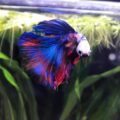
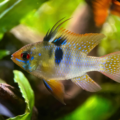
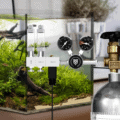

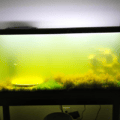
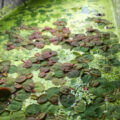
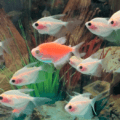
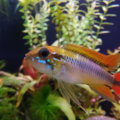
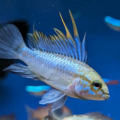
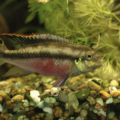
12 thoughts on “15 Dwarf Cichlids for a Peaceful Community Aquarium”